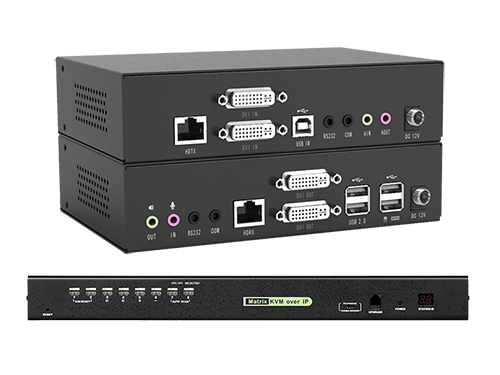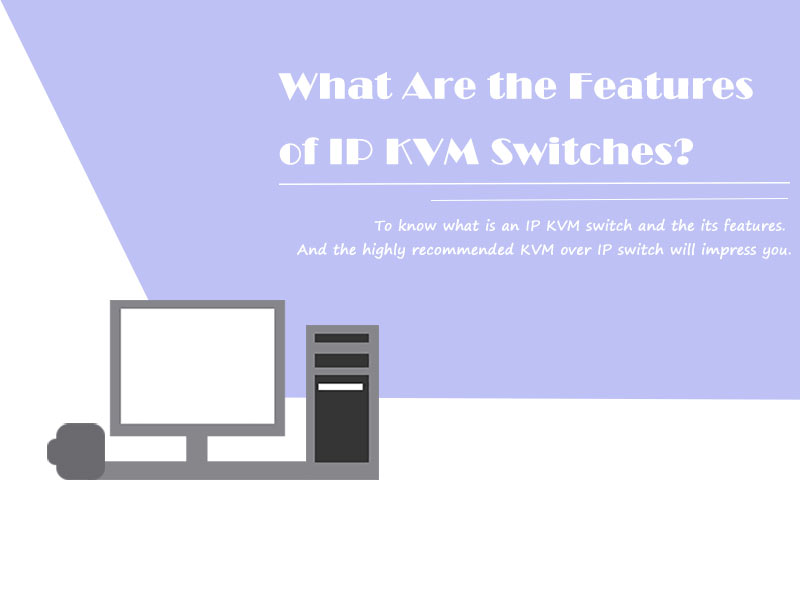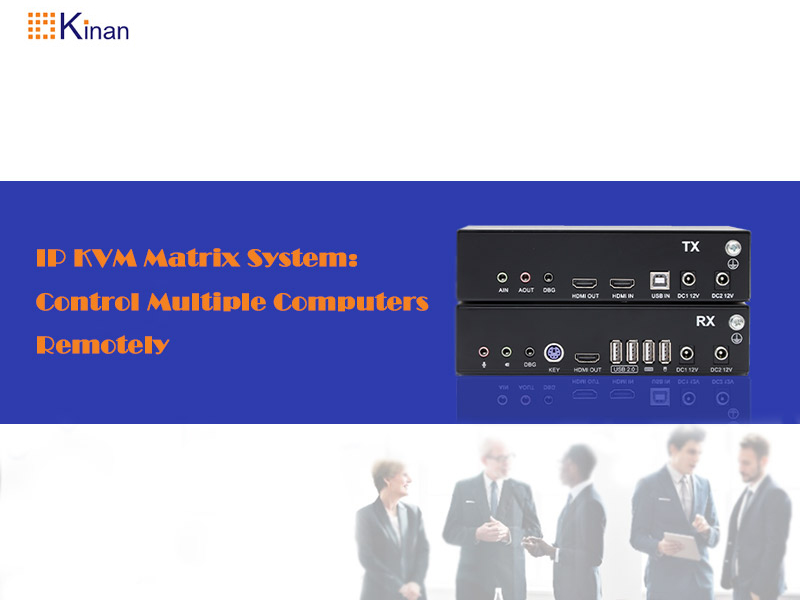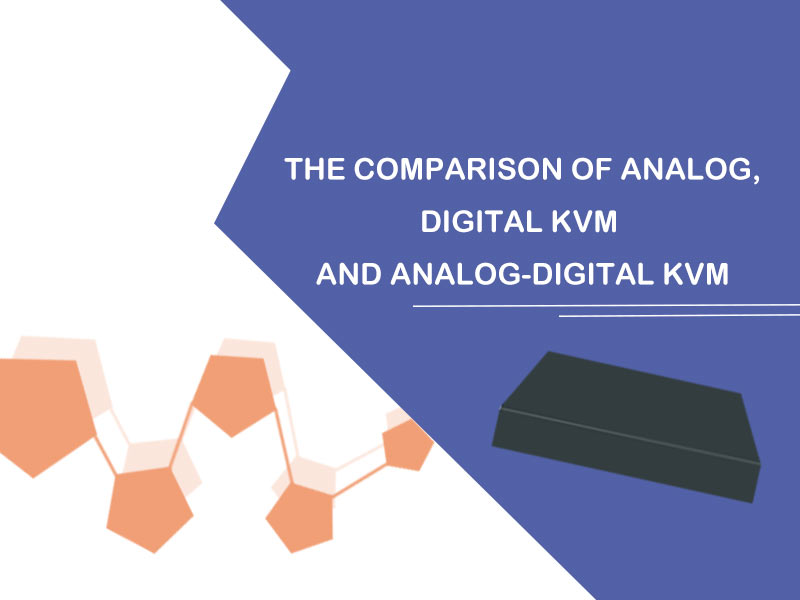There are so many KVM devices in our daily lives for managing a number of devices conveniently. With the development of technology, more and more KVM products are improved dramatically. For different application scenarios, people choose wanted KVM devices such as KVM switches, KVM consoles, KVM extenders, or KVM over IP switch, etc. Especially, KVM over IP switches are used in many companies because of the widespread of the Internet. Today, you will know about this device deeply after reading the following introduction.
What is an IP KVM switch?
A KVM over IP switch is a hardware used to control different connected devices via a web browser. It can convert video signals into digital data by connecting directly to a LAN or WAN. Thanks to the Internet, the users in remote places can control the target servers or devices easily and conveniently. What’s more, this reliable device has two types: LCD KVM over IP Switch and Rack Mount IP KVM Switch. The former provides an integration of the keyboard, monitor, and touchpad in a 1U rack-mountable console. Both of them are designed with different number of interfaces including 8 ports, 16 ports, 24 ports, and 32 ports.
What are the features of IP KVM switches?
At present, IP KVM is the most mainstream technology in the global market, because it has been used in large quantities for more than ten years, and this technology is now the largest share and the most widely used technology in the global control room market due to its mature technology and simple architecture, so it has great advantages in price, service and technology maturity. Read the following points so that you can have an impression of it.
Independent from the operation system and hardware.
IP KVM devices enable cross-platform operation. Regardless of the hardware configuration and operating system of the host controller, the remote device can be easily managed through a web browser on the remote control terminal. In addition, the users can use IP KVM to manage any type of servers with different operating system, like INTEL, SUN, PowerPC, WINDOWS, LINUX, SOLARIS and NOVELL, etc.
No agent is required.
IP KVM does not require that the operating system of the managed computer or server must be functional, nor does it require any special software to be installed on the managed computer or server. That is to say, using IP KVM switch will not occupy the system resources of the controlled computers. Compared with it, the remote management software occupies the system resources and is used based on the operating situation of the controlled devices. In this case, if the system can’t run normally, the remote management will be affected.
Independent from the Internet.
IP KVM enables out-of-band management. The control of computers can be independent of the network connected to the controlled device, and even if the network connection of the computer and server itself cannot be used, it can still be managed through IP.
BIOS-level access.
IP KVM has a lower level of management and control over the device, so the system can be maintained at the BIOS level. However, the remote management software can be used only when the BIOS, operating system and application run successfully.
The differences between IP KVM switches and KVM extenders
Actually, IP KVM switches are called KVM extenders with the function of remote management. Some people may feel confused about the differences between KVM over IP switches and KVM extenders. The former one is used to transmit signals via the Internet based on IP address, but the latter one is used to extend the signals of keyboard, video, mouse to the remote place via network cables. The extended distance is generally 100m, 150m, and 300m. On the remote control terminal, the KVM extender only needs to load the keyboard, mouse, and monitor on the receiver. But IP KVM needs a computer or laptop to control servers.

KVM extenders are relatively low cost and have no latency, but the extension distance is generally limited. On the contrary, IP KVM switches can provide remote management without limitation of distance, but the price is relatively high and there is a signal delay. Choosing which one depends on your requirements.
The recommended IP KVM switches
It is important to choose an ideal device. But which KVM switch is recommended? If you want to find a cost-collective KVM switch with high-quality service, the KVM over IP switch of Kinan is your first choice. It is simple to install and support transmitting distances up to 100m. In addition, Kinan provides a 2-year warranty and lifetime maintenance guarantee.
Conclusion
After knowing the four features of the IP KVM switches, are you interested in them? These features make KVM over IP switch a remarkable assistant for enterprises, especially Internet companies. If you are looking for a KVM over IP switch that helps you achieve remote management freely, why not try a famous brand, Kinan?


